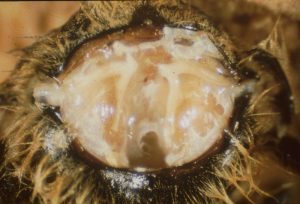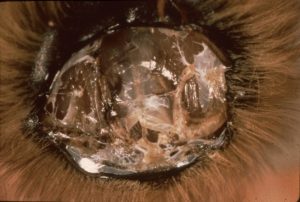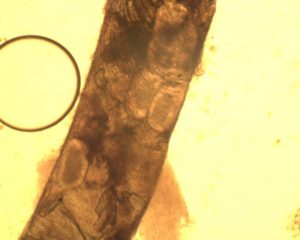There are currently four species of Tropilaelaps mites. Of these only two (Tropilaelaps clareae and Tropilaelaps mercedesae) are considered serious mite threats to the Western honey bee Apis mellifera(Anderson and Morgan, 2007). T. clareae and is already an economically important pest throughout Asia with the newly characterised T. mercedesae was widely spread, and was found on Apis mellifera in regions well outside its native range. In coming years both could spread into temperate regions. Both are considered emerging threats to world apiculture. The potential effects of climate change and the risks this represents for establishment of these pests in the UK are being studied at the National Bee Unit. Tropilaelaps spp. are statutorily notifiable under EU legislation.


Geographical Range
Life cycle

The females of T. clareae are light-reddish brown and about 1.0 mm long x 0.6 mm wide, and the males are almost as large as the females (about one-third the size of a Varroa mite). The life cycle and parasitism of A. mellifera is similar to that of Varroa destructor. T. clareae readily infests colonies of A. mellifera in Asia, particularly where colonies produce brood continuously. Adult female mites enter cells containing larvae where reproduction takes place within sealed brood cells. The mother mite lays three to four eggs on mature bee larvae 48 hours after cell capping. Development requires approximately 6 days, and the adults (including the mother mite) emerge with the hatching adult bee then search for new hosts. Mites move rapidly across the brood combs and are therefore easier to spot than Varroa, although they are much smaller. T. clareae has a shorter reproductive cycle than V. destructor, so when both mites are present in the same colony, T. clareaepopulations build up more rapidly. Unlike Varroa, Tropilaelaps only parasitise brood.
Current Status
Currently Tropilaelaps spp have not been found in the UK or the rest of Europe.The National Bee Unit Inspectorate carries out surveillance for these pests each year in apiaries considered “At risk”, for example around ports or freight depots. Beekeepers are strongly encouraged to regularly monitor their hives for their presence, and diagnoses are carried out by the NBU laboratory staff. Any suspect mites should be immediately sent to the Laboratory for investigation.
Further reading
- Detailed information about Tropilaelaps mites can also be found in our advisory leaflet ‘Tropilaelaps. Parasitic mites of honey bees‘;
- Tropilaelaps spp. can be found on theContingency Planpages of BeeBase;
- For more information on this pest please see theOIE Chapteron Tropilaelaps mites;
- Please follow the link to download our proposed action in the event of an introduction of Tropilaelaps into England or Wales:Tropilaelaps Risk Analysis.
Adapted from BeeBase, National Bee Unit, Animal Health and Plant Agency (APHA) under the terms of the Open Government Licence (OGL). Crown Copyright.